Mexico's Casa El Pinar balances show-stopping looks with sustainable architecture
Casa El Pinar walks the tightrope between drama and sustainability, courtesy of Taller Paralelo
Rafael Gamo - Photography
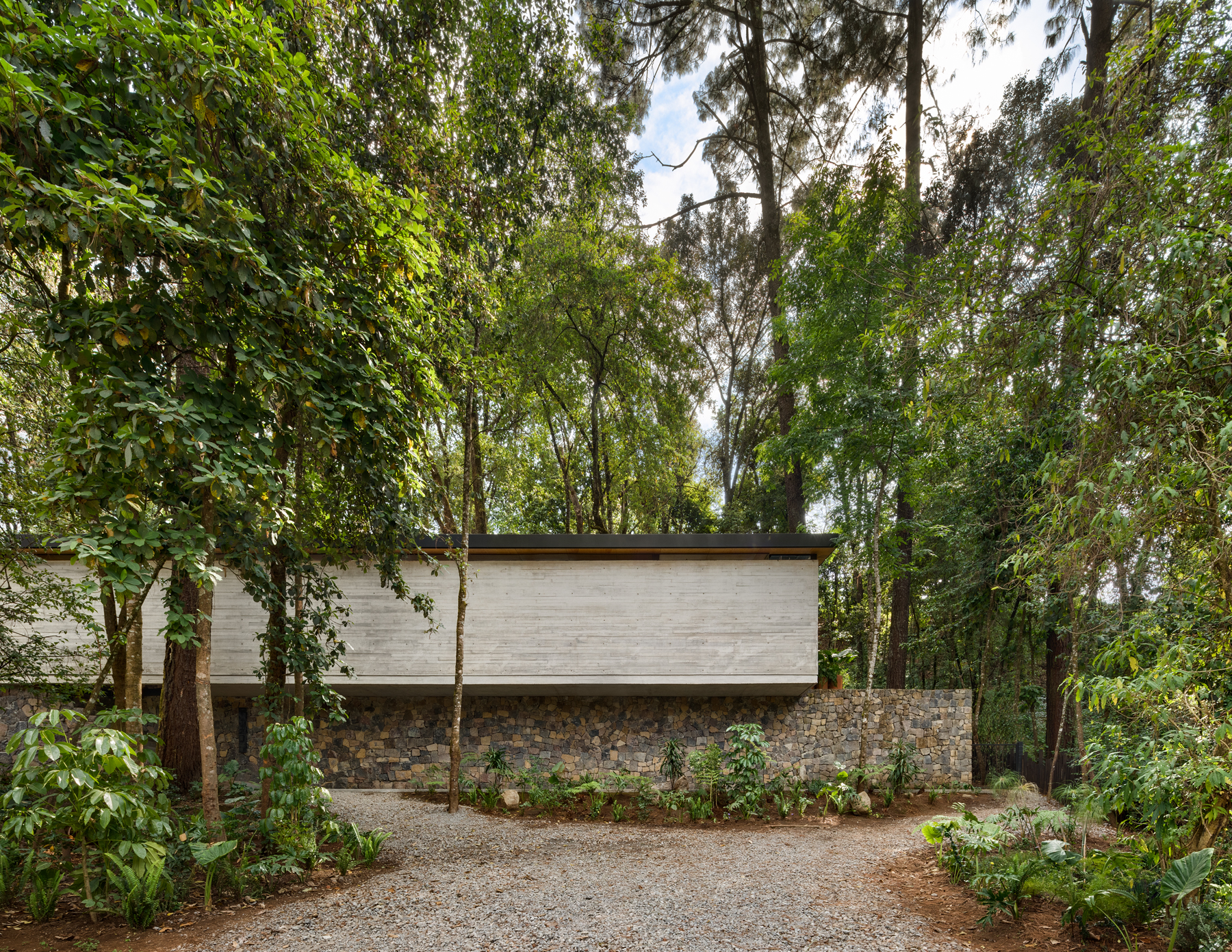
Is it possible to create a house that is strong and clear in its language, but at the same time respectful to its natural surroundings? This was the question the architects at Taller Paralelo, a Mexico City-based architecture studio, had to tackle when appointed for a new-build residential commission in a forest setting in the country's leafy Valle de Bravo. The result, Casa El Pinar, demonstrates just how a dramatic look can be balanced with sustainability.
The house, a vacation retreat for a private client, is an extraordinary escape sitting on a sloped terrain, among mature trees and low vegetation. The architects started by placing the house and crafting its design around the existing landscape – that is, they twisted and turned the floorplan so that no trees need be removed. Deep excavation and disturbance of the land were also avoided, adding to the overall architecturally sustainable approach.
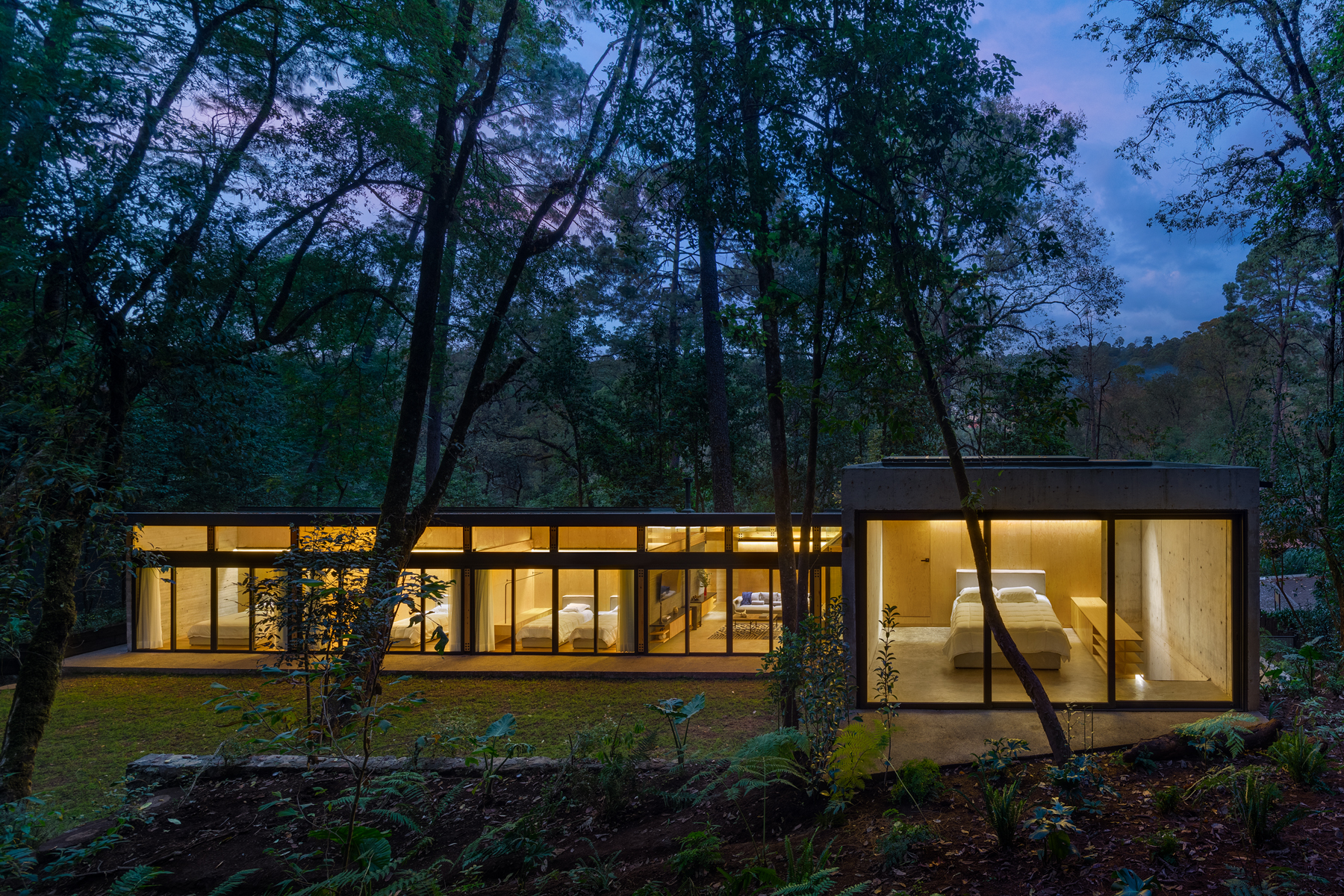
The structure is made of a simple and fairly restrained material palette. Concrete, steel, local stone and structural pine wood come together in a geometric volume that hosts the main domestic spaces. It appears opaque and mysterious from one side, but the other side is glazed and open towards the environment, spilling out onto elevated pathways, decked terraces and a swimming pool, merging indoors and outdoors. It is precisely this relationship between the generous internal spaces and the green outdoors that gives the house its distinct sense of luxury.
Almost everything, from the living spaces to three double bedrooms and bathrooms, is arranged in a linear fashion across the main, elevated ground level. A basement below holds auxiliary spaces, such as storage and mechanical rooms, while an added floor above the TV room provides a guestroom and en suite.
FSC-certified wood was used throughout, while a rainwater harvesting system and a wastewater recycling treatment plant tend to the home's water needs – reinforcing the architects' goal of designing a residence with a strong presence that’s gentle on the environment. ‘The project is simple and honest in essence,' say the architects. ‘Instead of existing separately, the structure and the finishes mimic each other; they are one and the same. The colour palette throughout the house is neutral and calming.'

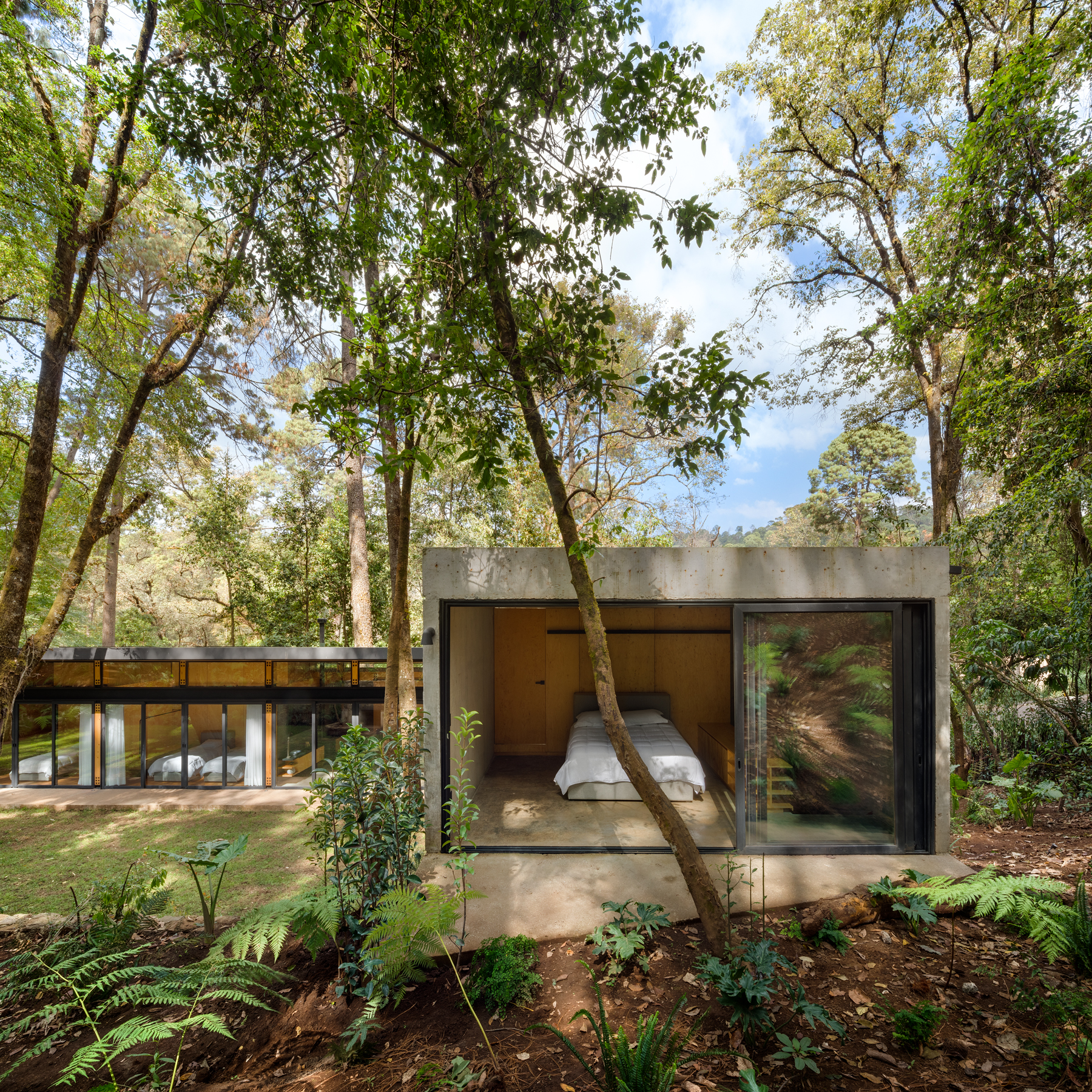
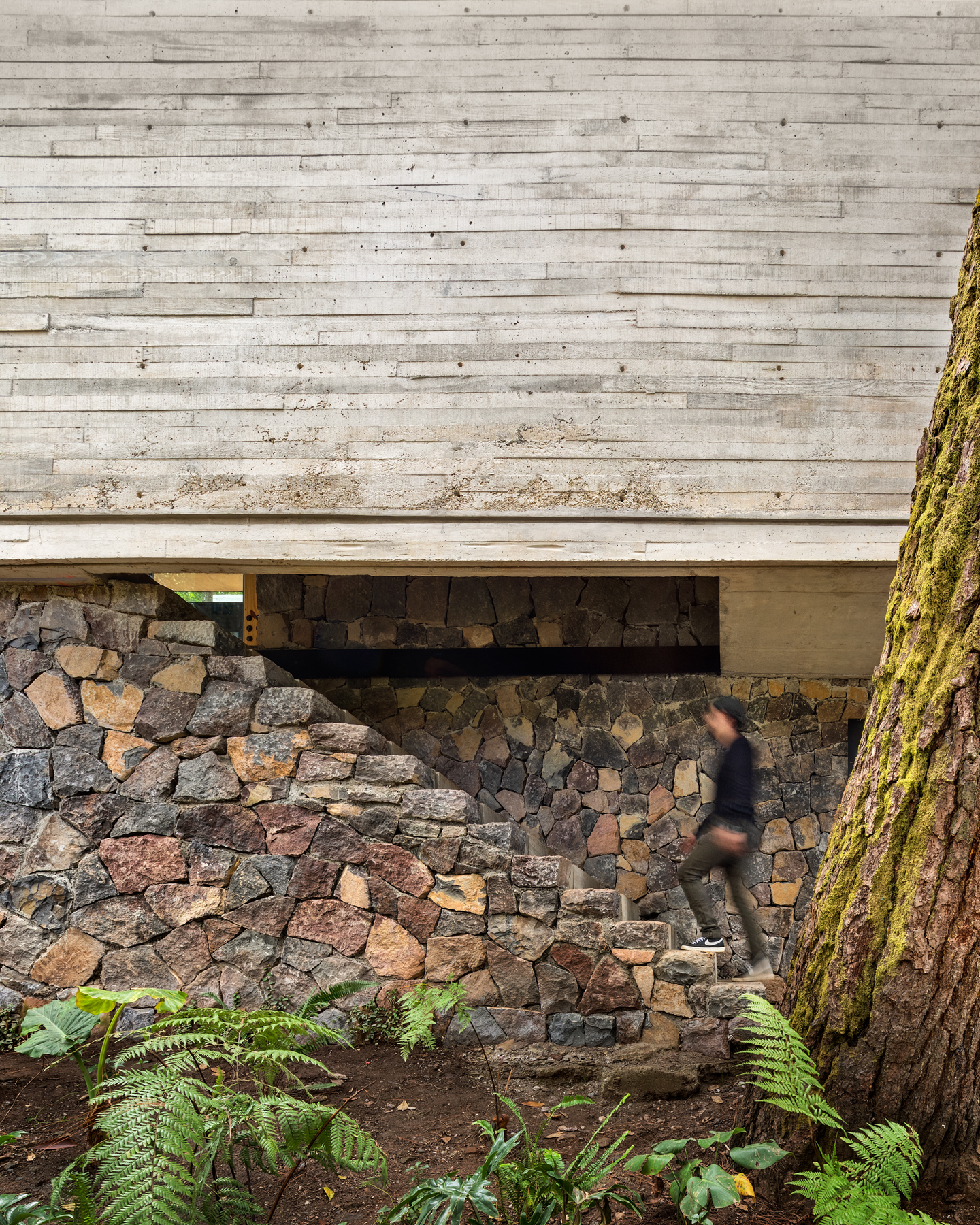
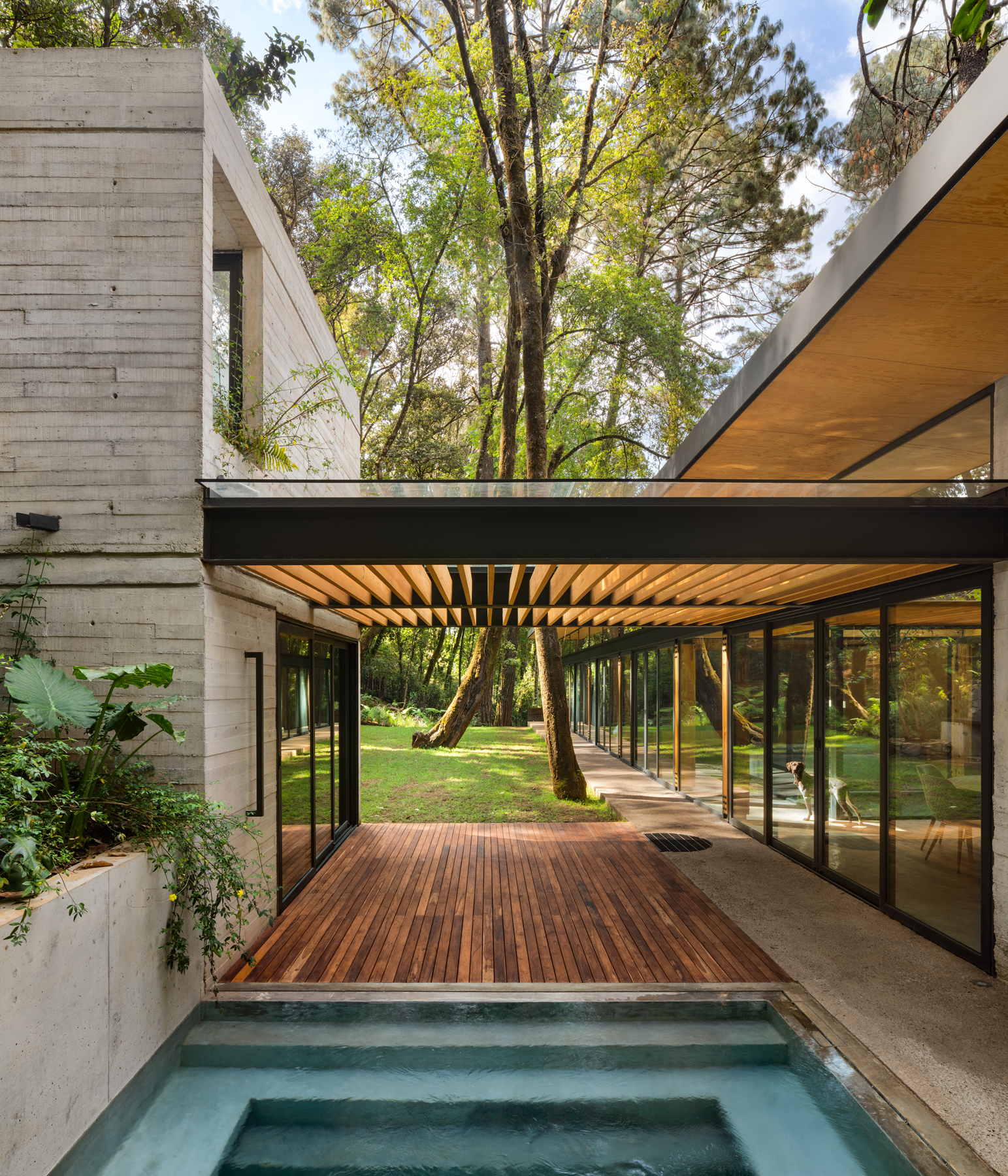
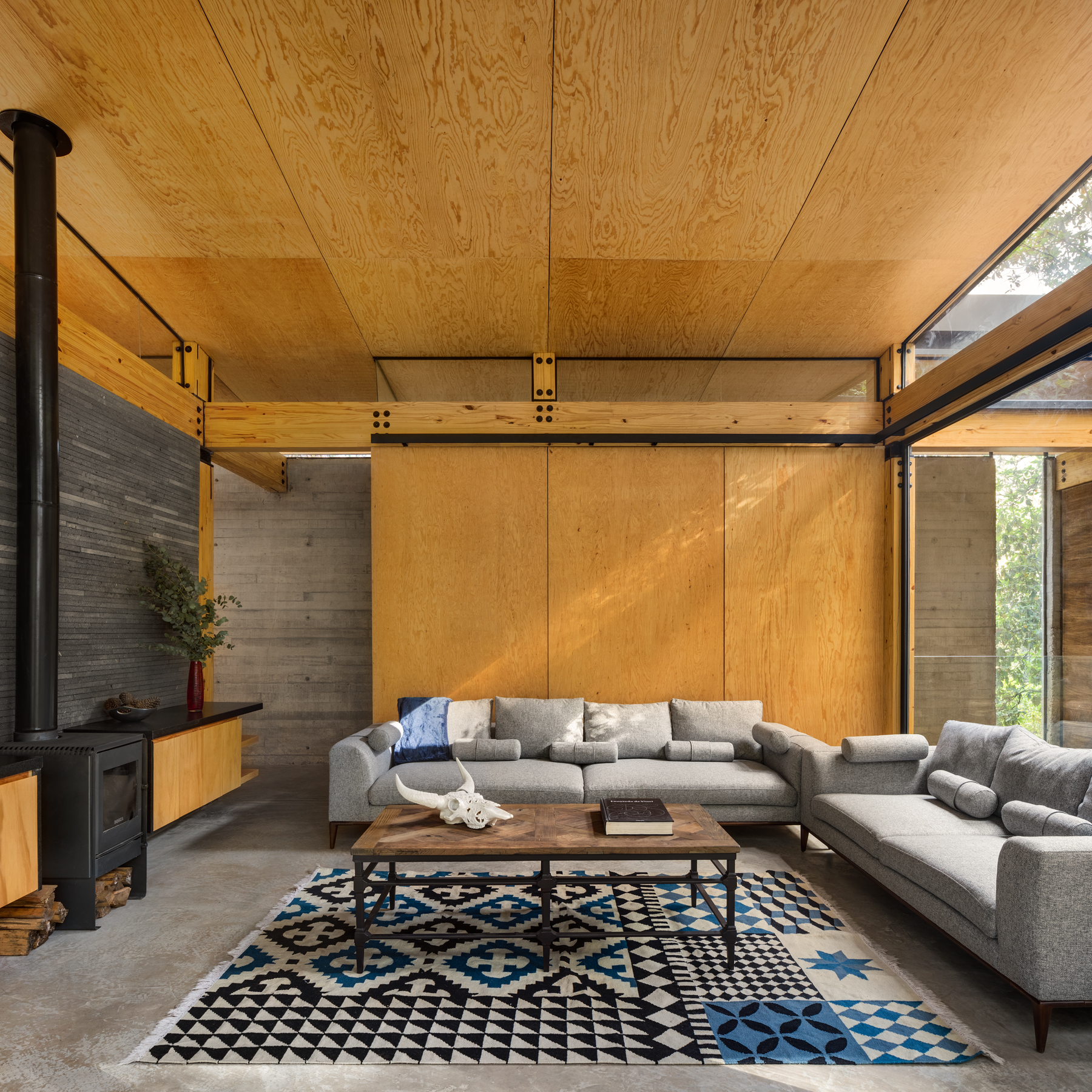


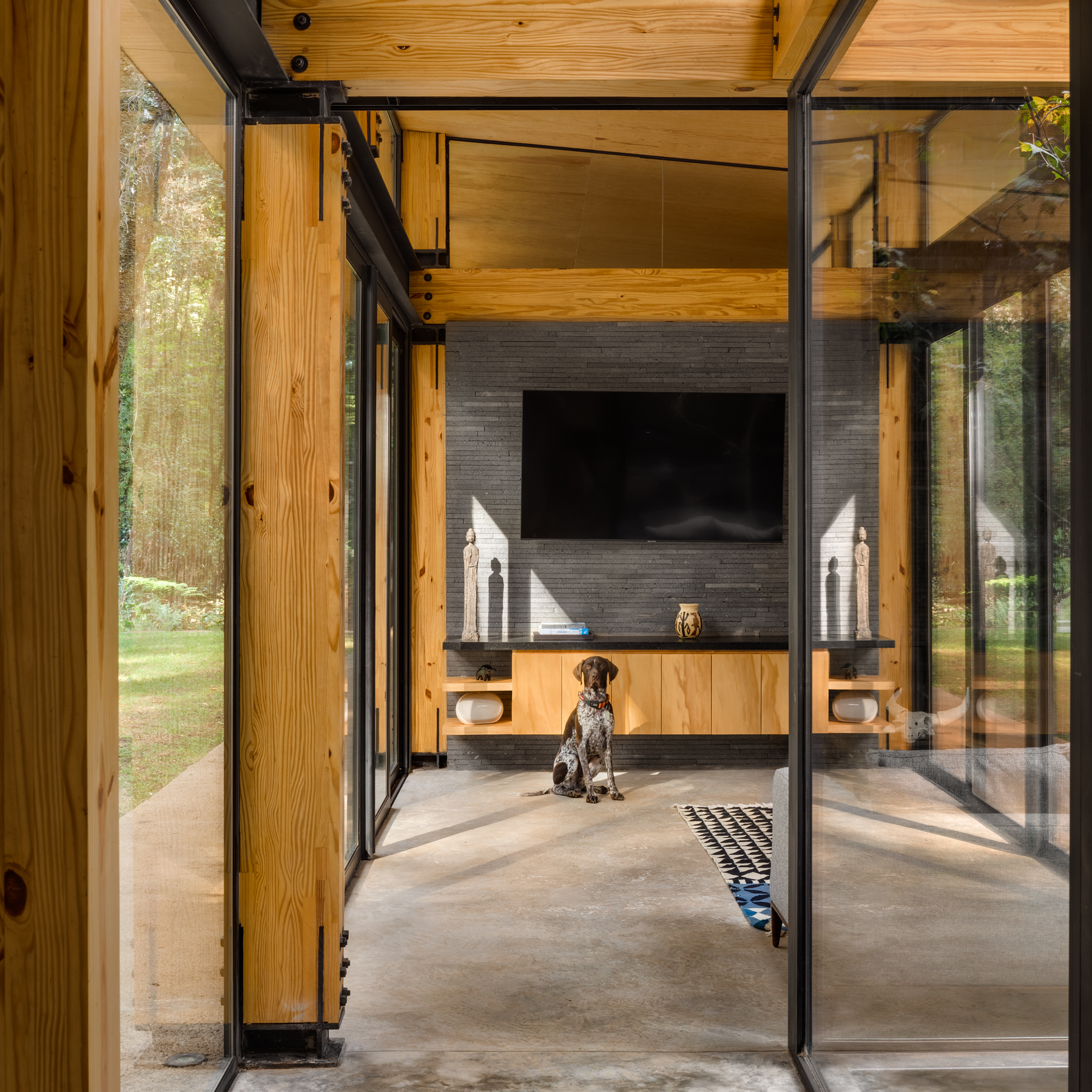
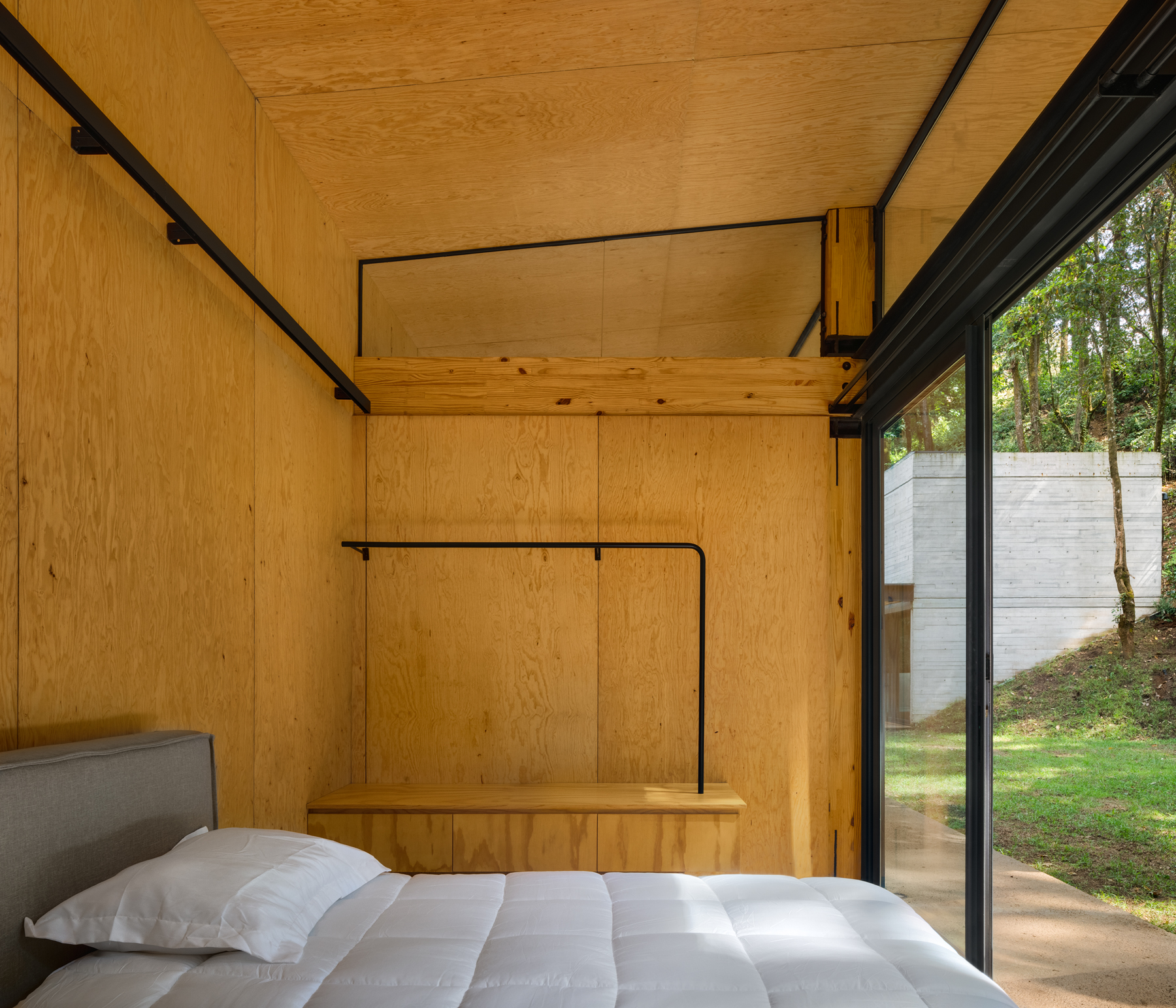
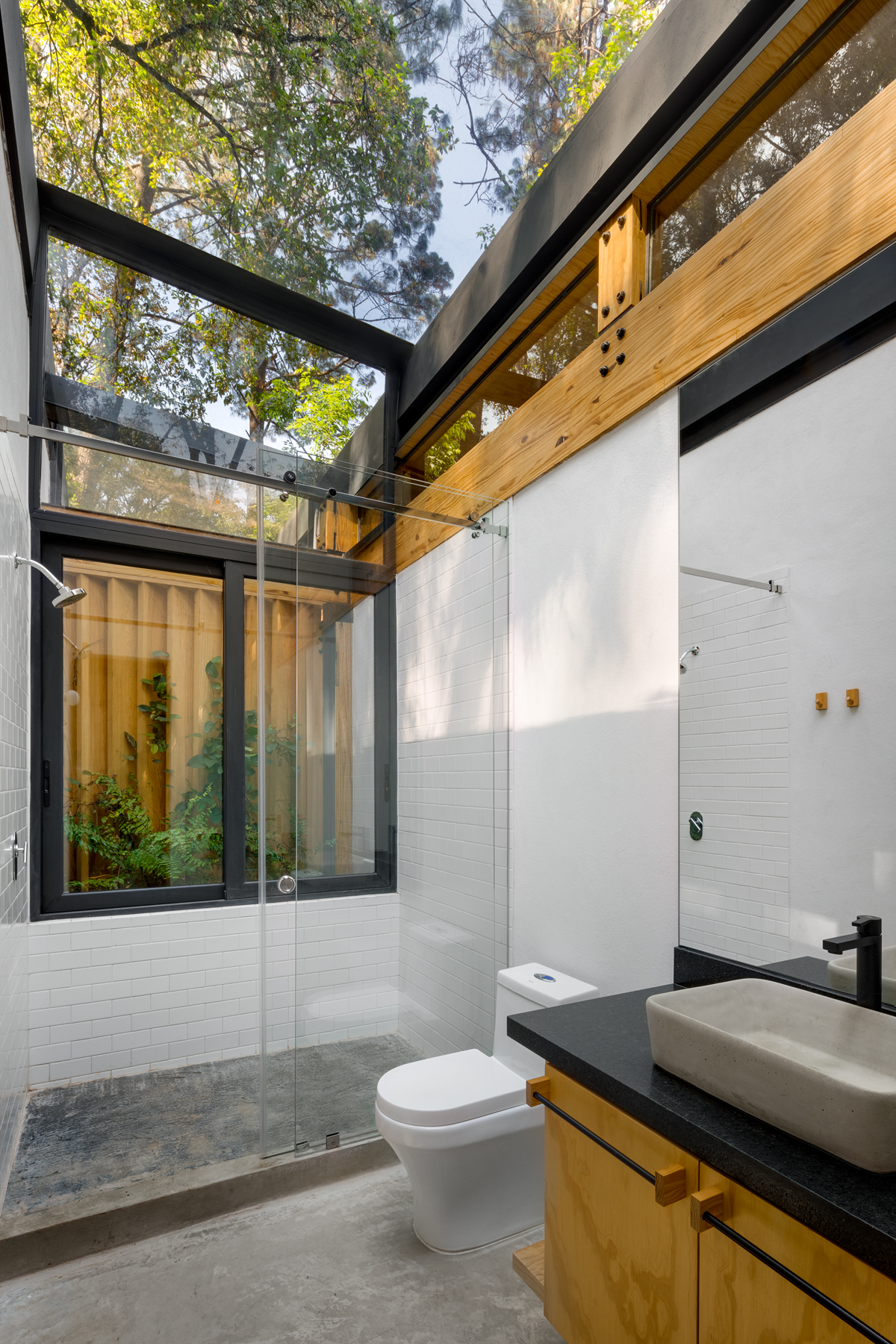

INFORMATION
tallerparalelo.mx
Receive our daily digest of inspiration, escapism and design stories from around the world direct to your inbox.
Ellie Stathaki is the Architecture & Environment Director at Wallpaper*. She trained as an architect at the Aristotle University of Thessaloniki in Greece and studied architectural history at the Bartlett in London. Now an established journalist, she has been a member of the Wallpaper* team since 2006, visiting buildings across the globe and interviewing leading architects such as Tadao Ando and Rem Koolhaas. Ellie has also taken part in judging panels, moderated events, curated shows and contributed in books, such as The Contemporary House (Thames & Hudson, 2018), Glenn Sestig Architecture Diary (2020) and House London (2022).
-
 Usher opens up about breakfast playlists, banana pudding and why a glass tumbler is always on his rider
Usher opens up about breakfast playlists, banana pudding and why a glass tumbler is always on his riderOn the heels of a collaboration with Baccarat, the Grammy-winning singer-songwriter breaks down his entertaining tips. 'Hosting is an expression of how you feel about your guests and also who you are.'
-
 The beauty trends that will define 2026, from ultra-niche fragrances to anti-ageing dental care
The beauty trends that will define 2026, from ultra-niche fragrances to anti-ageing dental careAs we enter the new year, we speak to experts in fragrance, skincare, aesthetics, wellness and more about the trends that will be shaping the way we look
-
 The most stylish hotel debuts of 2025
The most stylish hotel debuts of 2025A Wallpaper* edit of this year’s defining hotel openings. Design-led stays to shape your next escape
-
 For Rodríguez + De Mitri, a budding Cuernavaca architecture practice, design is 'conversation’
For Rodríguez + De Mitri, a budding Cuernavaca architecture practice, design is 'conversation’Rodríguez + De Mitri stands for architecture that should be measured, intentional and attentive – allowing both the environment and its inhabitants to breathe
-
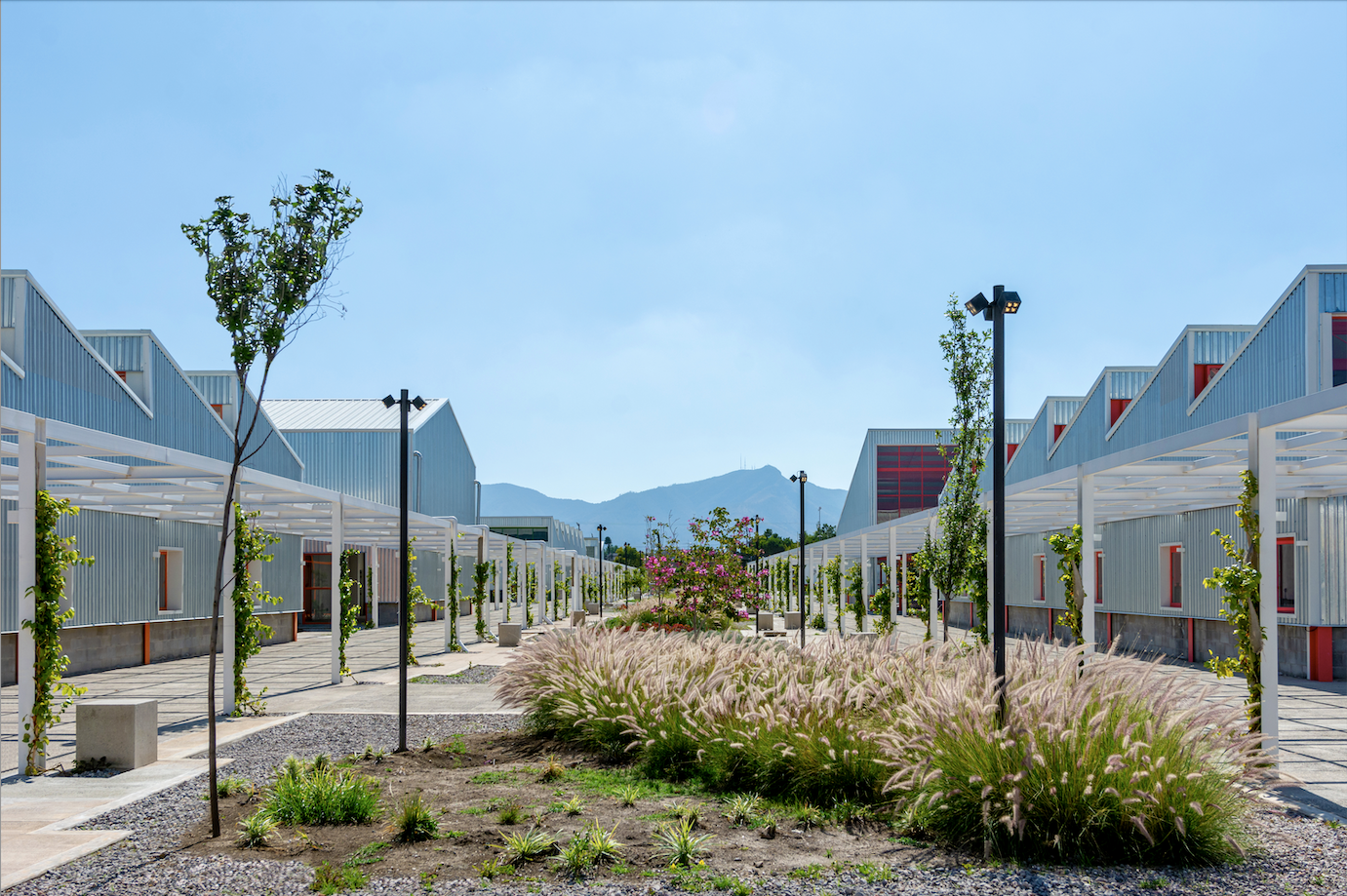 Mexico's Office of Urban Resilience creates projects that cities can learn from
Mexico's Office of Urban Resilience creates projects that cities can learn fromAt Office of Urban Resilience, the team believes that ‘architecture should be more than designing objects. It can be a tool for generating knowledge’
-
 These Guadalajara architects mix modernism with traditional local materials and craft
These Guadalajara architects mix modernism with traditional local materials and craftGuadalajara architects Laura Barba and Luis Aurelio of Barbapiña Arquitectos design drawing on the past to imagine the future
-
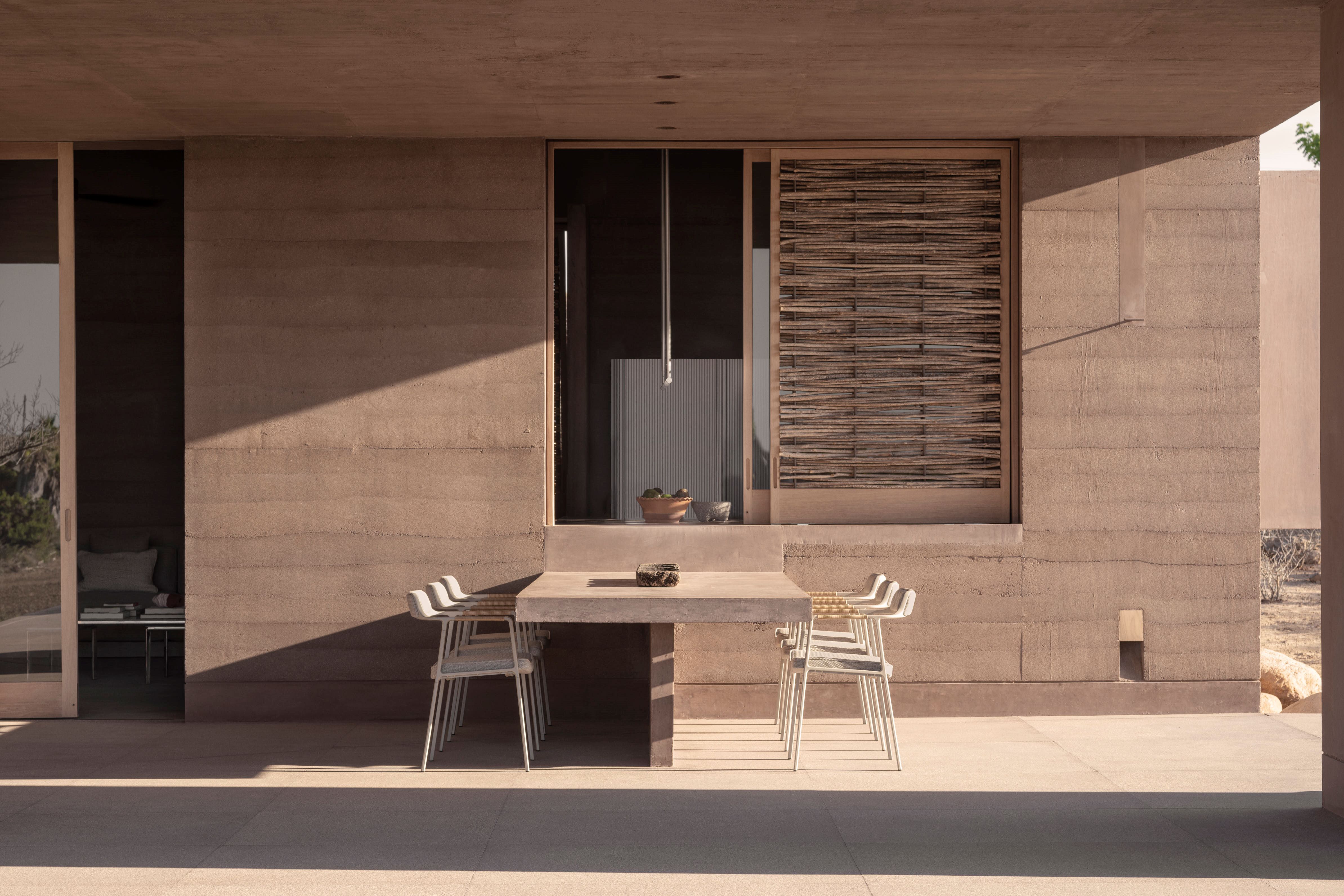 This Mexican architecture studio has a surprising creative process
This Mexican architecture studio has a surprising creative processThe architects at young practice Pérez Palacios Arquitectos Asociados (PPAA) often begin each design by writing out their intentions, ideas and the emotions they want the architecture to evoke
-
 The architecture of Mexico's RA! draws on cinematic qualities and emotion
The architecture of Mexico's RA! draws on cinematic qualities and emotionRA! was founded by Cristóbal Ramírez de Aguilar, Pedro Ramírez de Aguilar and Santiago Sierra, as a multifaceted architecture practice in Mexico City, mixing a cross-disciplinary approach and a constant exchange of ideas
-
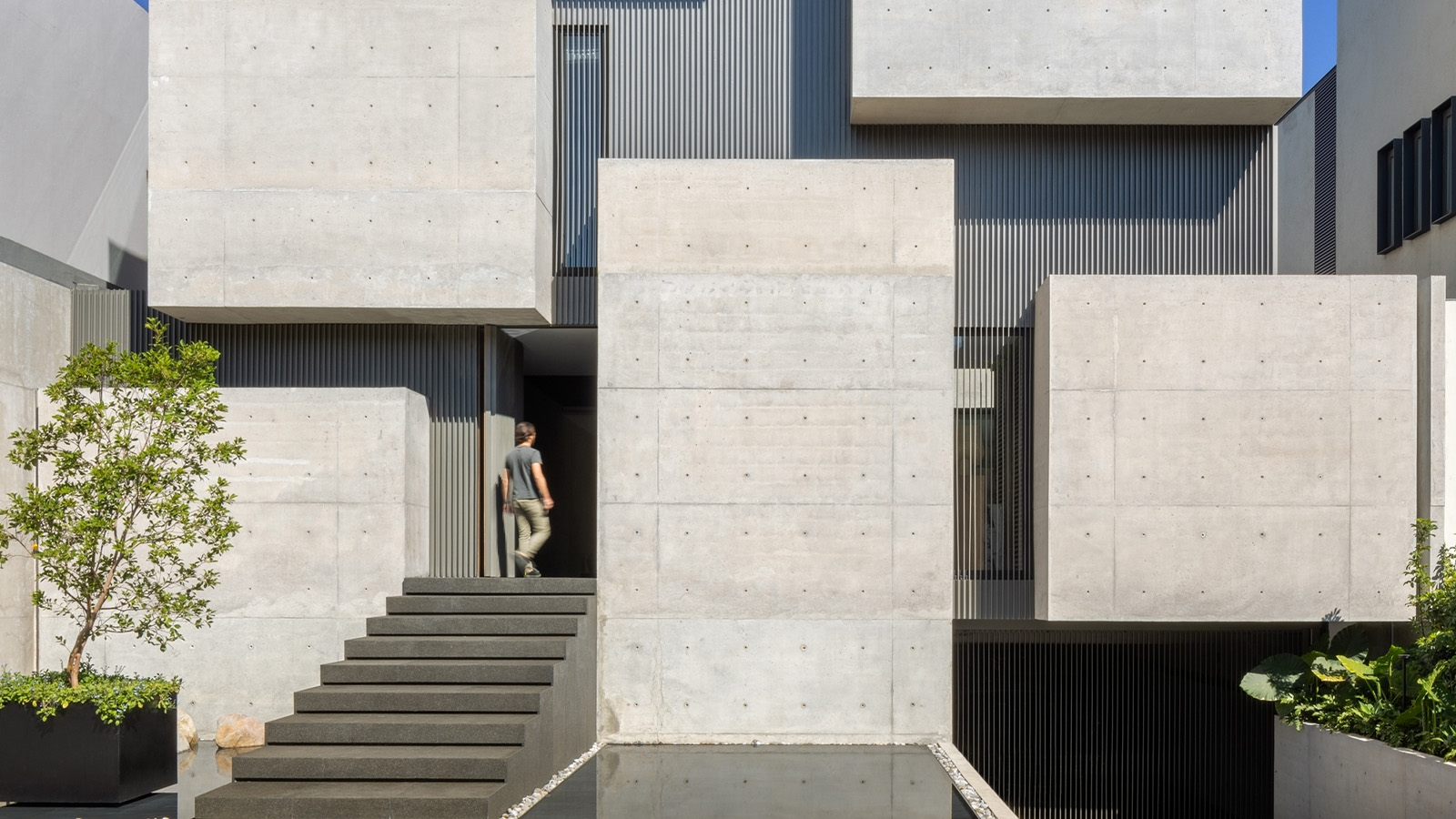 A cubist house rises in Mexico City, its concrete volumes providing a bold urban refuge
A cubist house rises in Mexico City, its concrete volumes providing a bold urban refugeCasa Ailes, a cubist house by Jaime Guzmán Creative Group, is rich in architectural expression that mimics the dramatic and inviting nature of a museum
-
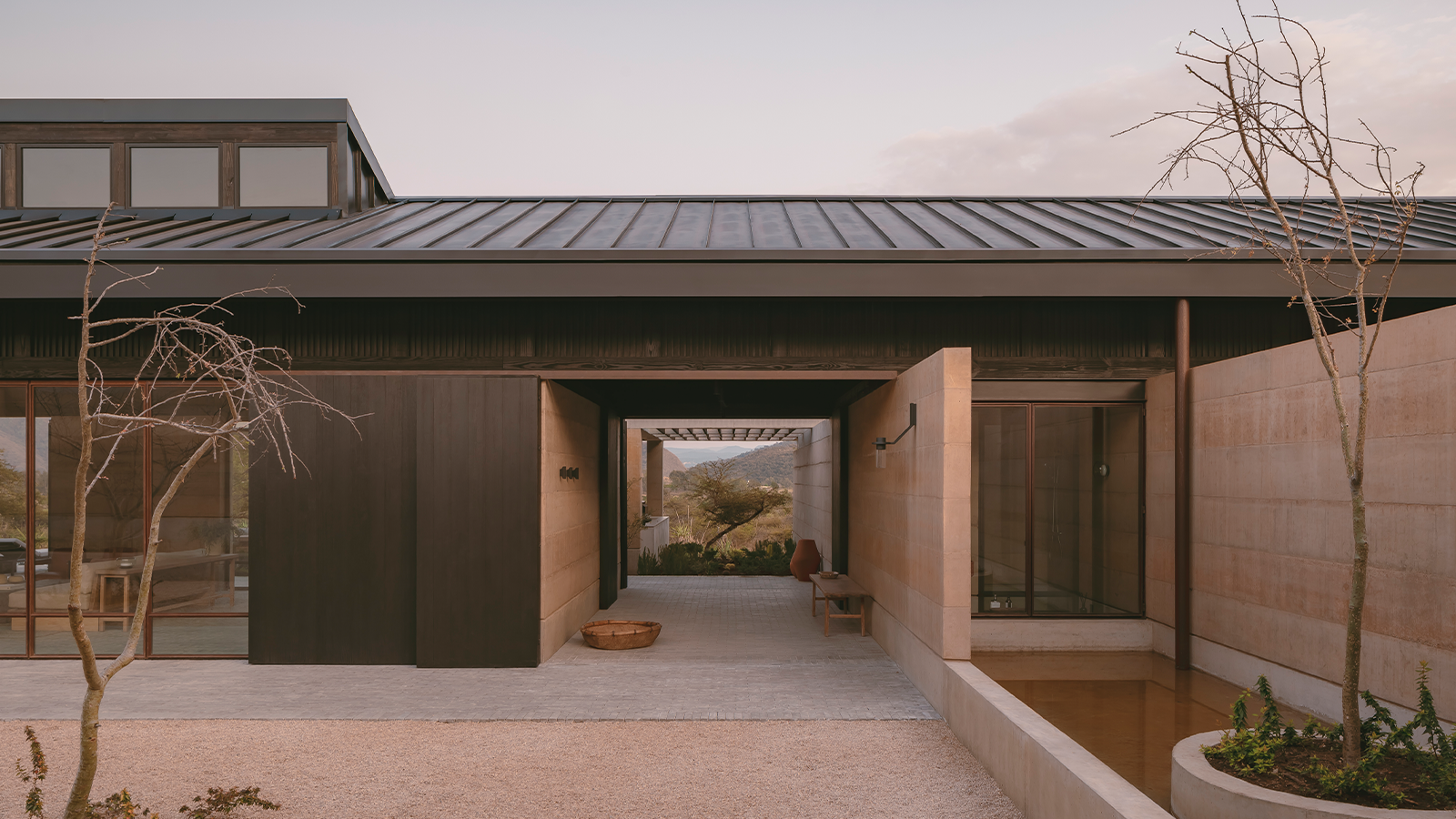 Serenity radiates through this Mexican home, set between two ravines
Serenity radiates through this Mexican home, set between two ravinesOn the cusp of a lakeside town, Mexican home Casa el Espino is a single-storey residence by Soler Orozco Arquitectos (SOA)
-
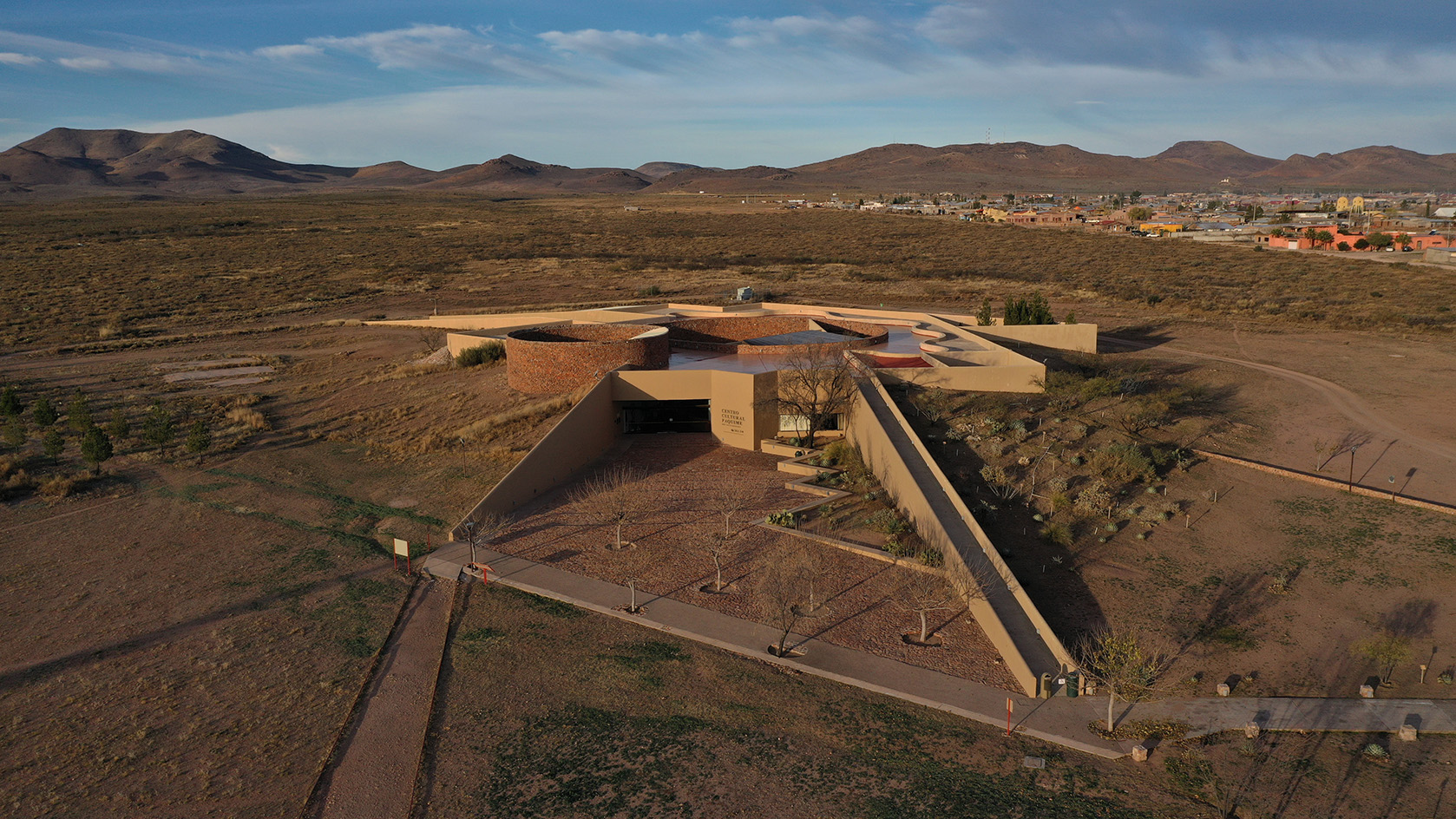 Mexican landscape architect Mario Schjetnan's Grupo de Diseño wins 2025 Oberlander Prize
Mexican landscape architect Mario Schjetnan's Grupo de Diseño wins 2025 Oberlander PrizeThe 2025 Oberlander Prize goes to Mexican landscape architect Mario Schjetnan and his studio, Grupo de Diseño, highlighting the creative's motto: 'We have a human right to open space'